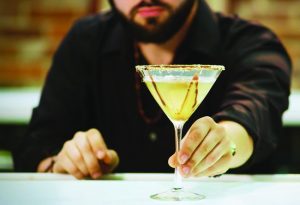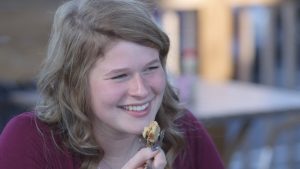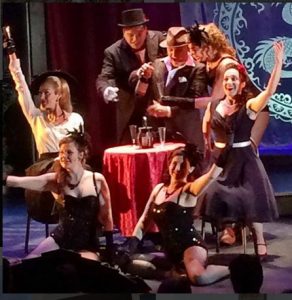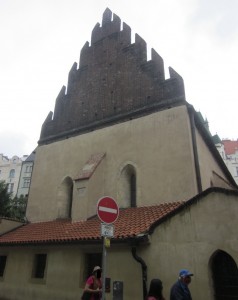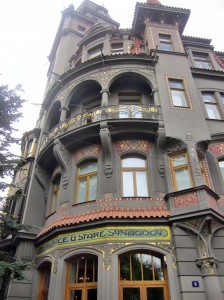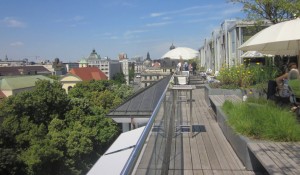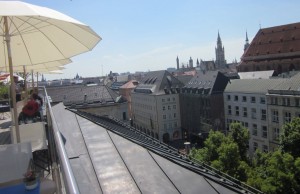Tag Archive
activity architecture art artist building Canada children city CostSaver downtown drive i-95 entertainment Europe event exhibit family festival Florida food fun historic History landmark local Museum music Nature New Zealand Ontario roadtrip sculpture Seattle show sights sightseeing tour tourist Trafalgar travel travelblogger view Washington Washington State water world
US: Florence, SC – Go Nuts for Pecans in Florence and Snag some Free Swag
US: Daytona Beach, FL – Praise the Lord and Pass the Suntan Lotion
The Daytona Beach Drive–In Church – Back in 1953 when this was still the Neptune Drive-In Theater, The First Christian Church organized the first drive-in service. 
Buying the property in 1957, they now welcome everyone – tourists, the physically challenged, families with kids or those looking for a unique way to worship (honking your horn = clapping).
Services typically last for about 55 minutes and they offer hot coffee and Krispy Kreme donuts before and after each service in Friendship Hall.
Perfect for those going to swim on Sunday (don’t need to wear your Sunday best!) – just stay in the car, tune in on your radio, and at the end Rev. Robert Kemp-Baird will shake your hand through the window – then you can zip across the street to the beach.
Location: Daytona Beach Drive In Christian Church, 3140 South Atlantic Avenue
Daytona Beach Shores, FL 32118
Hours: Sun 8:30 & 10
Tel: 386-767-8761
driveinchurch.net
For Regional Accommodations, Restaurants & Attractions: DaytonaBeach.com
Canada: Montreal , Quebec – Centaur Theatre’s Last Night at the Gayety
George Bowser and Rick Blue have an amazing way with words. True to the their well-known genre it’s the songs at Centaur’s Last Night at the Gayety, that really “sing”. They are just so darn clever. The play, about Montreal’s infamous years of “Casinos, Bordellos and Booze” (one of the songs) could have been formulaic, but manages to relate a story which not only keeps you interested, but giggling and titillated throughout.
A tale of this era could not be told without the usual suspects: the gangster, nightclub owner, priest and cops (the good and bad). The glue holding it all together is the famous stripper Lili St. Cyr. Julia Juhas is a knockoff, so perfectly cast; she elegantly glides across the stage dressed to kill in early 50’s fashions, yet bumps and grinds so provocatively with those sinuous long legs.
What could be wrong with a night of inside jokes, overacting, silly songs, erotic dancing, love, lust, murder, gangsterism and priestly disgust – all so definitively Montreal. Bowser and Blue make sure to point out, tongue-in-cheek this city was made for burlesque because there’s a main street named Beaver Hall Hill and the crossroads of downtown is after all, called “Peel”. Lili retorts that she prefers Las Vegas because its main street is known as “The Strip” (bada boom).
Cosmos Tour: Prague Vienna Budapest – Prague Jewish Ghetto
The former Jewish Ghetto (now called Josefov) in Prague goes back to the 12th century. In fact, the oldest synagogue in Europe, the Old-New Synagogue, is still there and it is still used for its purpose, as there are regular services. An old legend says it was built of stones from the Second Temple in Jerusalem. This quarter was demolished in 1897. Today, there are 6 synagogues, the Jewish City Hall and the Old Jewish Cemetery from the 15th century. Notice the Rabbi’s house has gold decorations and the clock with hebrew letters which dates to 1674.
In 1389 the biggest anti-Jewish pogrom in the Middle Ages took place here, when about 3,000 citizens of the Jewish Quarter were killed, turning the walls of the Old–New Synagogue dark with blood. Their homes were plundered and burned.
However, in the 16th century, this quarter was thriving. Some of the synagogues we can still see were built then. The Maisel Synagogue houses an exhibition of the Jewish Museum in Prague. In the 1950’s, the Pinkas Synagogue became a Memorial to victims of the Holocaust. The walls of the nave, gallery and vestibule were covered with names of about 80,000 Bohemian and Moravian Jews. You can also see drawings of Jewish children made in the Terezin concentration camp between 1942 and 1944. There were more than 10,000 children under the age of 15 there. In 1577, the High Synagogue was built as a part of the Jewish City Hall, and the original vault with some Gothic features and stucco decoration still can be seen.
Nowadays, Paris St. in this area is one of the most popular places to live in Prague. If you get hungry, you can eat at the King Solomon kosher restaurant. Michelle Obama ate there when she was in town.
www.cosmos.com/Product.aspx?trip=46050
Germany: Munich Hotel Bayerischer Hof
The Hotel Bayerischer Hof was opened in 1841 because King Ludwig I wished to have a comfortable place for his guests to stay. (What – no extra rooms in his gi-normous palace?). Today it is still a gorgeous 5-star hotel, but we think the best places are on the roof and in the basement.
Palais Keller, situated in the old salt cellar from the Middle Ages, is an inexpensive but delicious place to dine on traditional Bavarian food. Go down the stone steps to this bustling restaurant with waitresses sporting frilly aprons, carrying big mugs of Lowenbrau beer and wearing big smiles. The folkloric atmosphere only adds to the taste of the veal in cream sauce with spaetzle, potato salad, sauerkraut, bread dumplings, weiswursts and cheese wursts, along with pretzels with mustard.
After you’ve dined head for the roof, to the Blue Spa Bar & Lounge. Have a drink in the sky and take in the birds-eye view of all of Munich before you.
In 1897 Herrmann Volkhardt bought the hotel, and today Innegrit Volkhardt, the fourth generation, is the General Manager. It was bombed in WWII; Falk Volkhardt, the son of Hermann made an amazing discovery under the ruins of the destroyed hotel – the Spiegelsaal (Mirror Hall) had survived almost intact. In October 1945, this was where he opened the first restaurant in the centre of Munich after the war.
Germany: Munich Residenz
The Wittelsbach dynasty ruled the German territories of Bavaria from 1180 to 1918 – that’s 738 years, pretty impressive. Munich Residenz, their former royal palace, is located right in the center of Munich and very much open to the public. After 4 centuries of building it, the giant palace is made up of many styles: late Renaissance, Baroque, Rococo and Neo-Classicism.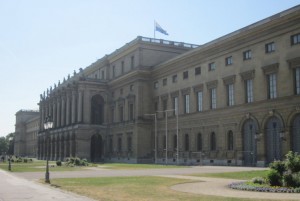
Though spartan on the outside, it is very opulent inside. You can tour it for its architecture, over-the-top room decor (130 rooms), and displays from the former royal collections. After WWII, the Cuvilliés Theatre was built into the Festsaalbau wing. You can also catch the Bavarian Radio Symphony Orchestra in Hercules Hall. In his time, Mozart performed in this palace.
The Treasury houses the jewels of the Wittelsbach dynasty and spans 1,000 years, from the early Middle Ages to Neo-classicism, and includes: crowns, swords, golden objects, rock crystal, ivory, goblets, icons, tableware and toiletries.
The palace suffered huge damages during WWII, but the curators managed to store furnishings, art and details of its architecture in mines. When you are wandering around the 10 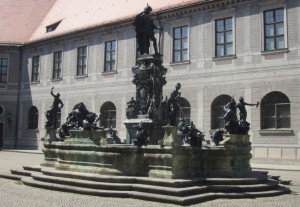 courtyards, see if you can find this fountain with statues of fire, water, earth and air on its corners.
courtyards, see if you can find this fountain with statues of fire, water, earth and air on its corners.
The Wittelsbach family’s head, since 1996, is Franz, Duke of Bavaria, and he still hangs out in Munich. During WWII, the Wittelsbachs were anti-Nazi and were arrested when Franz was 11. He spent time in several Nazi concentration camps. After the war, he studied at the University of Munich and became a collector of modern art. Some of his collection is on loan to the Pinakothek der Moderne Museum (see other post).
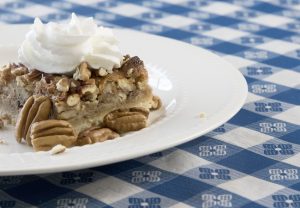 Florence is home to the South Carolina Pecan Trail, showcasing 17 local restaurants and specialty shops offering pecan dishes or products, putting pecans in the spotlight. From pecan-encrusted grouper to pecan pie martinis, those venturing on the trail will experience a variety of originality.
Florence is home to the South Carolina Pecan Trail, showcasing 17 local restaurants and specialty shops offering pecan dishes or products, putting pecans in the spotlight. From pecan-encrusted grouper to pecan pie martinis, those venturing on the trail will experience a variety of originality.
